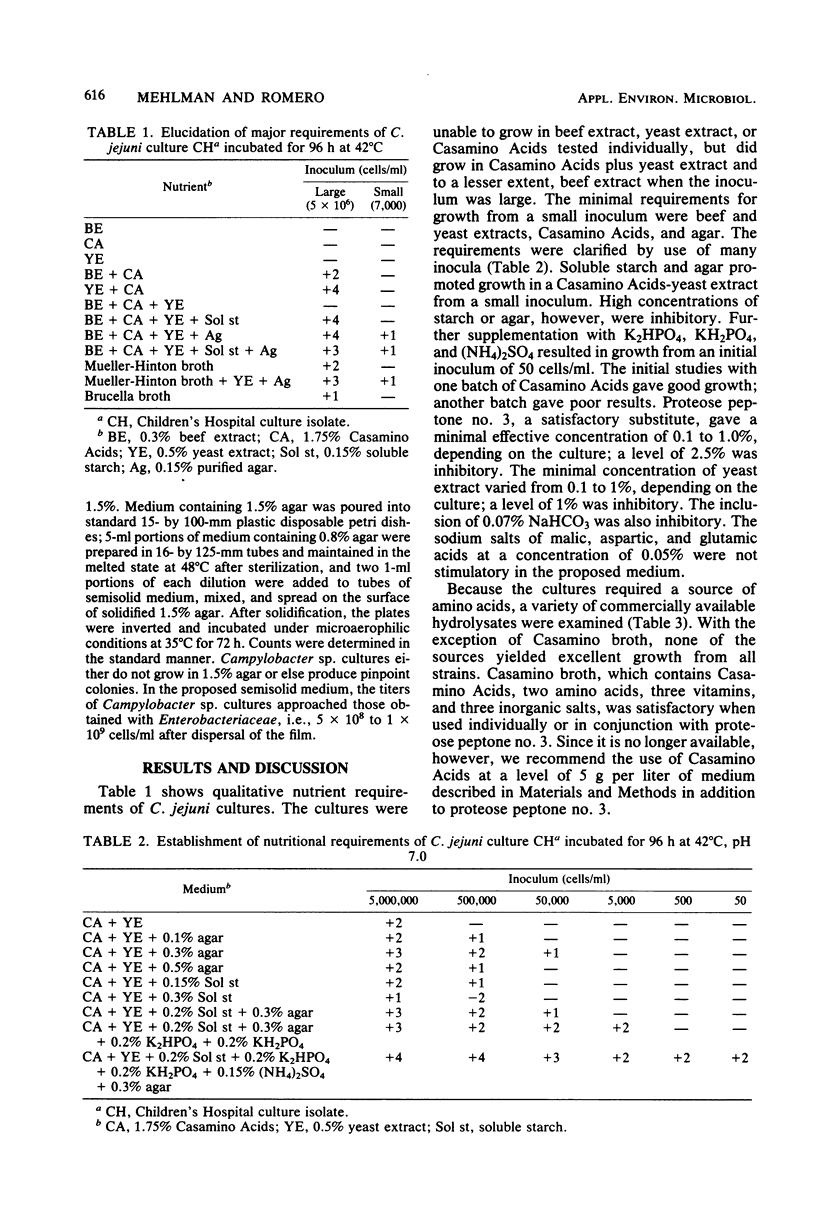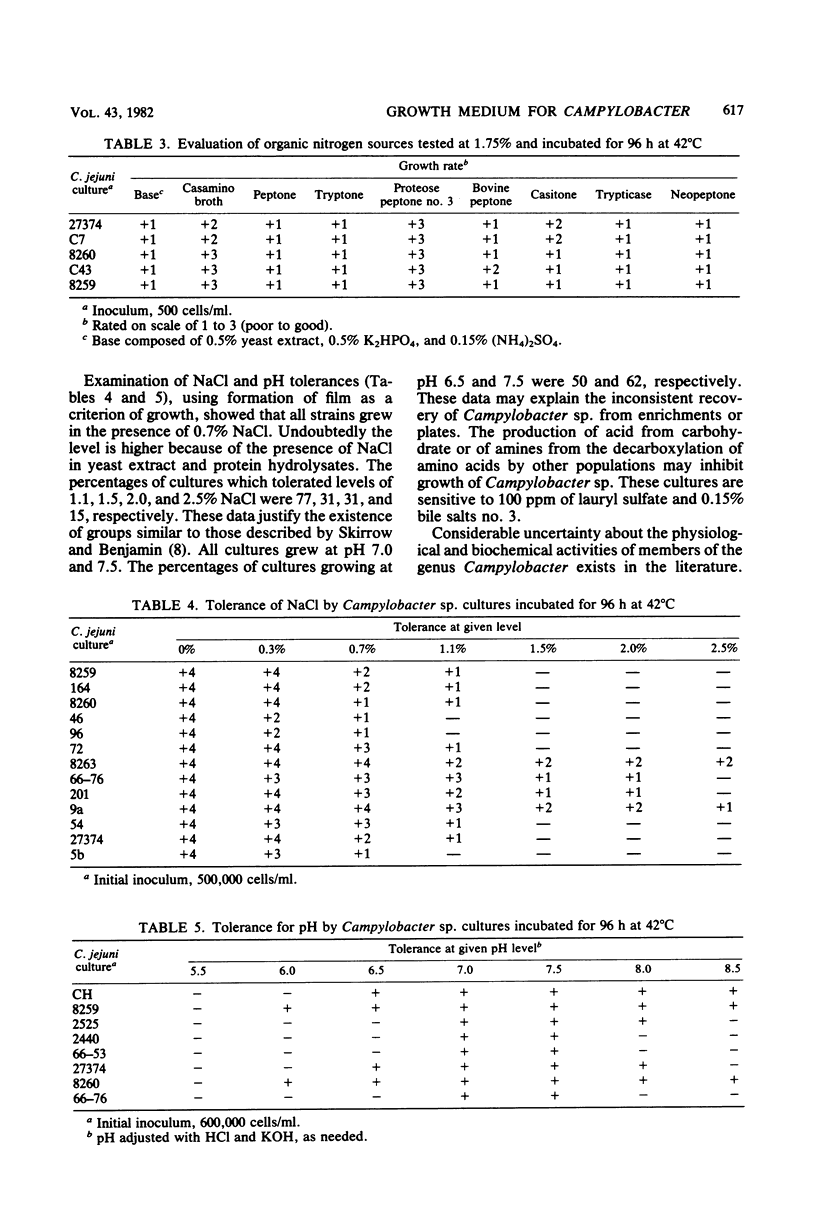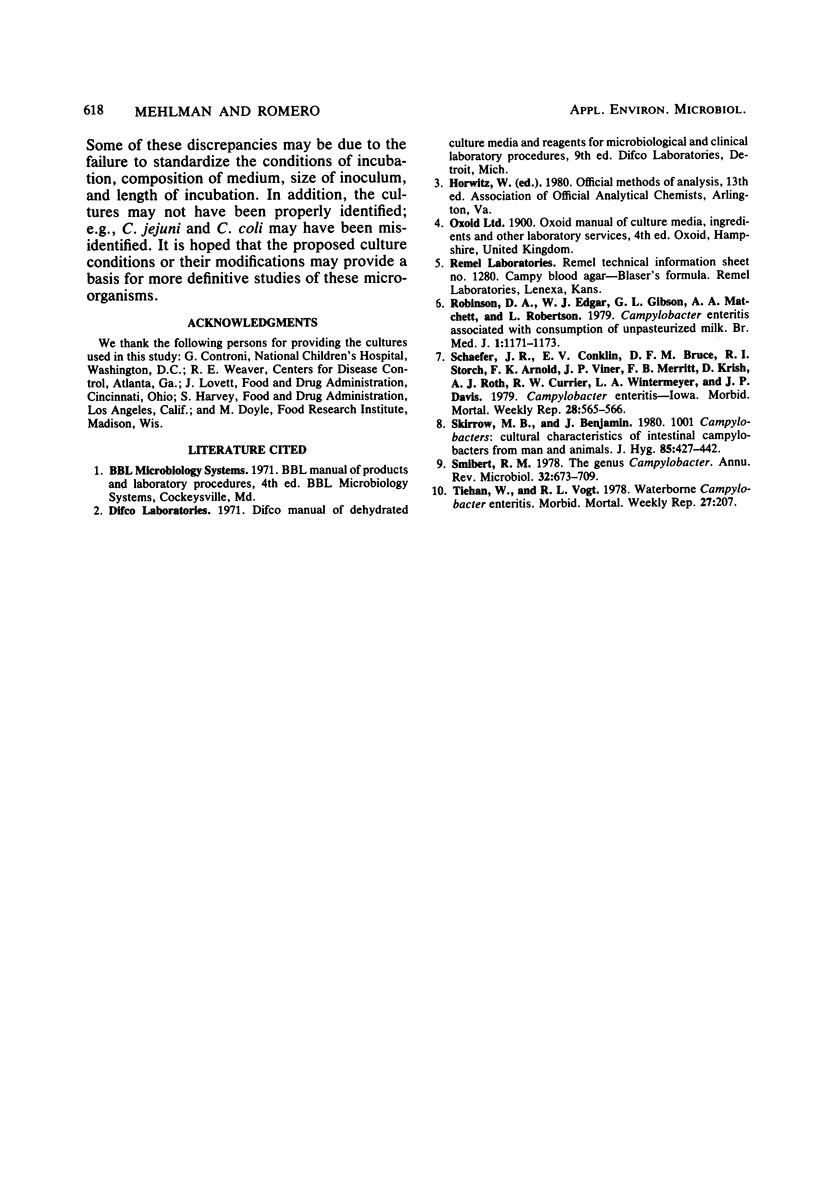Abstract
Campylobacter species were grown in a base containing proteose peptone no. 3, yeast extract, K2HPO4, (NH4)2SO4, NA2SO3, soluble starch, and agar. Concentrations and sources of organic nitrogen and growth factors were critical, and the optimal pH range was 7.0 to 7.5. Cultures tolerated 0.7% NaCl in addition to the salt present in the organic constituents and were sensitive to surface-active agents at concentrations recommended for enrichment of other gram-negative bacteria. Cultures were maintained on the proposed medium for 1 year with transfer every 2 weeks.
Full text
PDF



Selected References
These references are in PubMed. This may not be the complete list of references from this article.
- Robinson D. A., Edgar W. J., Gibson G. L., Matchett A. A., Robertson L. Campylobacter enteritis associated with consumption of unpasteurised milk. Br Med J. 1979 May 5;1(6172):1171–1173. doi: 10.1136/bmj.1.6172.1171. [DOI] [PMC free article] [PubMed] [Google Scholar]
- Skirrow M. B., Benjamin J. '1001' Campylobacters: cultural characteristics of intestinal campylobacters from man and animals. J Hyg (Lond) 1980 Dec;85(3):427–442. doi: 10.1017/s0022172400063506. [DOI] [PMC free article] [PubMed] [Google Scholar]
- Smibert R. M. The genus Campylobacter. Annu Rev Microbiol. 1978;32:673–709. doi: 10.1146/annurev.mi.32.100178.003325. [DOI] [PubMed] [Google Scholar]


